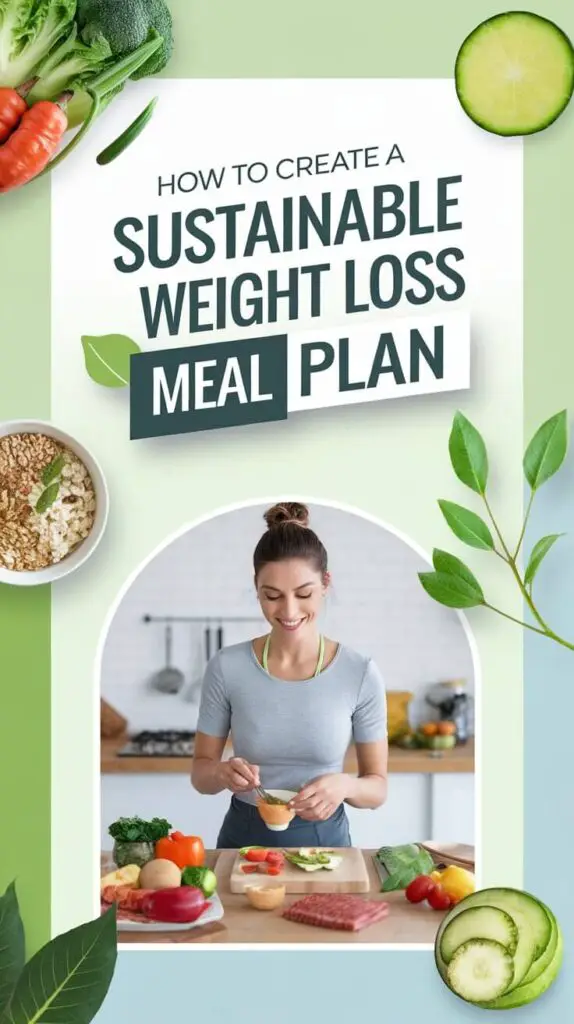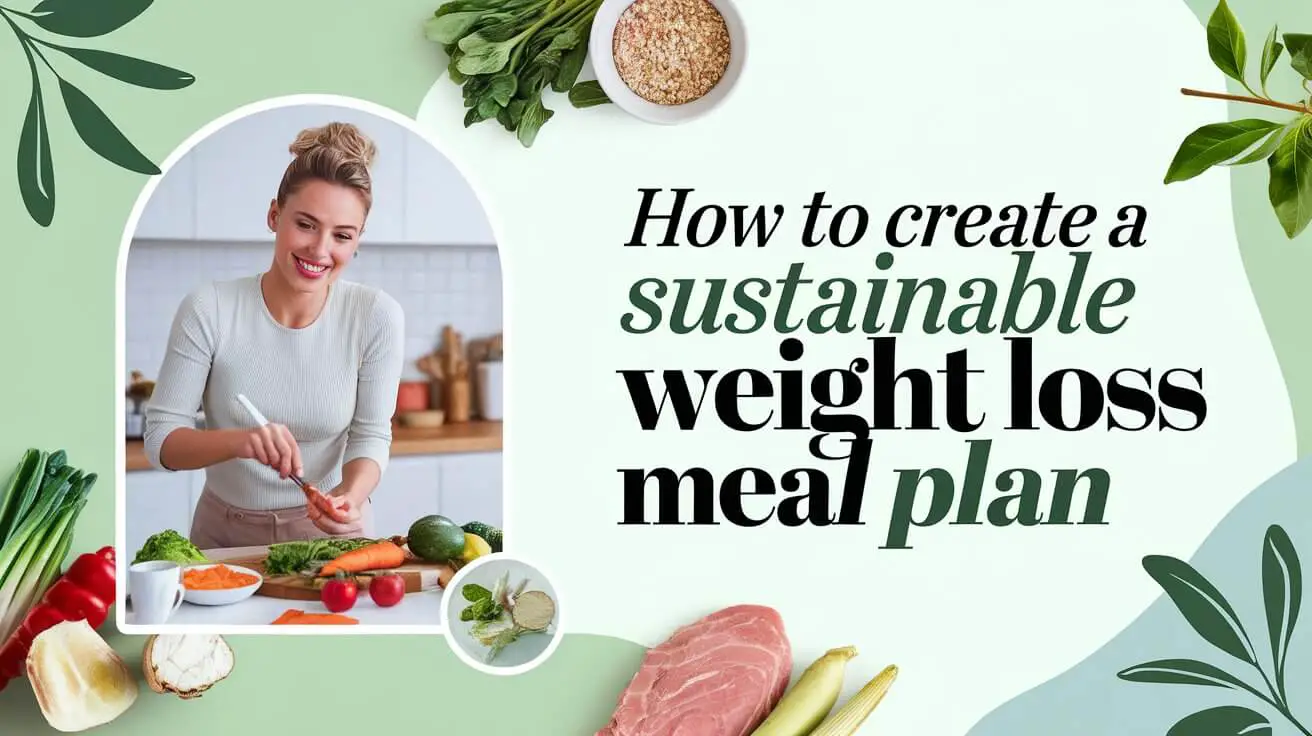If you are looking to lose weight in a healthy and sustainable way, a well-planned meal strategy is key. A sustainable weight loss meal plan isn’t about starving yourself or cutting out all the foods you love. Instead, it focuses on balance, variety, and habits you can maintain in the long term.

When I started my weight loss journey, I struggled with meal planning. It took me a while to figure out that the goal wasn’t perfection but consistency. In this article, I’ll share practical steps to create a meal plan that works for you and supports your weight loss journey.
Step 1: Understand Your Nutritional Needs
To create a sustainable meal plan, you need to know your body’s needs. Factors like age, gender, weight, activity level, and personal goals determine how many calories you need daily. Tools like online calorie calculators can help, or you can consult a dietitian.
For weight loss, aim to create a calorie deficit—eating fewer calories than your body uses. However, it’s important to keep the deficit moderate to avoid feeling overly hungry or fatigued.
Personal Tip: When I calculated my calorie needs, I realized that eating slightly smaller portions and focusing on nutrient-dense foods was enough to see progress.
Step 2: Focus on Macronutrients
A balanced meal plan should include:
- Protein: Keeps you full and helps maintain muscle while losing fat.
- Healthy Fats: Provide energy and help your body absorb vitamins.
- Complex Carbohydrates: Fuel your body and keep your energy steady.
- Fiber: Supports digestion and keeps you satisfied.
Each meal should have a balance of these macronutrients. For example, a meal could include grilled chicken (protein), quinoa (carb), avocado (fat), and steamed broccoli (fiber).
Step 3: Include Foods You Enjoy
One of the biggest mistakes I made early on was cutting out all my favorite foods, which led to cravings and, eventually, binge eating. A sustainable plan allows room for treats in moderation.
Instead of avoiding pizza, I started making healthier versions at home. I used whole-grain crust, added lots of veggies, and controlled the cheese. This way, I still enjoyed my meals without feeling guilty.
Step 4: Plan Your Meals and Snacks
Planning ahead makes it easier to stick to your goals. I like to take some time each week to plan my meals and snacks. Here’s a simple way to do it:
- Write a Weekly Menu: Choose meals for breakfast, lunch, dinner, and snacks.
- Grocery Shop with a List: Buy only what you need for the week to avoid unhealthy impulse purchases.
- Meal Prep: Prepare ingredients or cook meals in advance to save time during busy days.
Example Menu:
– Breakfast: Oatmeal with almond butter and banana
– Snack: Greek yogurt with berries
– Lunch: Grilled chicken salad with avocado
– Snack: A handful of nuts
– Dinner: Salmon with roasted sweet potatoes and steamed green beans
Step 5: Watch Portion Sizes
Portion control is an important part of weight loss. Even healthy foods can add up in calories if you eat too much. Using smaller plates, measuring portions, and being mindful while eating helped me avoid overeating.
Personal Experience: I used to pour cereal straight into a bowl without measuring, often eating twice the serving size. Now, I use a measuring cup to make sure I stick to one serving.
Step 6: Stay Flexible
Life happens, and sometimes you’ll have to eat out or deviate from your plan. That’s okay. A sustainable plan is about progress, not perfection.
When I eat out, I look for healthier menu options, like grilled meats or salads. If I indulge in something richer, I balance it by eating lighter meals the rest of the day.
Step 7: Keep Hydration in Mind
Drinking enough water is crucial for weight loss. Sometimes, what feels like hunger is actually thirst. I make it a habit to carry a water bottle with me and aim to drink water with every meal.
Pro Tip: If plain water feels boring, try infusing it with lemon, cucumber, or mint for a refreshing twist.
Step 8: Monitor Your Progress
Tracking your meals and progress can help you stay accountable. I started using a simple food journal to note what I ate and how I felt. It helped me identify patterns, like emotional eating, and make better choices.
Foods to Include in a Sustainable Meal Plan
– Lean Proteins: Chicken, fish, tofu, eggs
– Whole Grains: Brown rice, quinoa, oats
– Healthy Fats: Avocado, nuts, olive oil
– Fruits and Vegetables: Aim for a variety of colors
– Low-Calorie Snacks: Air-popped popcorn, carrot sticks, boiled eggs
Common Mistakes to Avoid
1- Skipping Meals: This can lead to overeating later in the day.
2- Over-restricting: Cutting too many calories can slow your metabolism.
3- Ignoring Hunger Cues: Eat when you’re hungry and stop when you’re satisfied.
Conclusion
Creating a sustainable weight loss meal plan is about finding what works for you and making gradual changes. Focus on balance, portion control, and including foods you love. With a little planning and flexibility, you can build habits that last a lifetime.
This approach has helped me not only lose weight but also maintain a healthy lifestyle without feeling deprived. I hope it helps you too.
